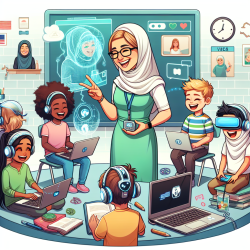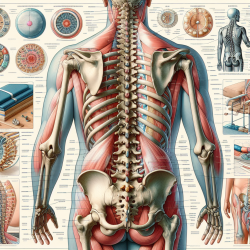Introduction to TeamSTEPPS® and Its Relevance in Child Therapy
In the realm of healthcare, teamwork and communication are pivotal to achieving optimal outcomes. The research article "Critical Care Teamwork in the Future: The Role of TeamSTEPPS® in the COVID-19 Pandemic and Implications for the Future" underscores the significance of structured teamwork training, particularly during crises. As providers of online therapy services to schools, TinyEYE can draw valuable insights from this study to enhance the delivery of therapy to children.
Understanding TeamSTEPPS®
TeamSTEPPS® (Team Strategies and Tools to Enhance Performance and Patient Safety) is a program developed by the Agency for Healthcare Research and Quality. It aims to improve team dynamics through five core competencies: team structure, communication, leadership, situation monitoring, and mutual support. These competencies have been shown to enhance teamwork attitudes, skills, and performance, ultimately leading to better patient safety.
Key Findings from the Research
The study conducted during the COVID-19 pandemic revealed that TeamSTEPPS® training significantly impacted teamwork and communication within medical intensive care units (MICUs). The findings highlighted the importance of a shared mental model, role clarity, trust, and empathy among team members. These elements contributed to improved team efficiency and patient care.
Applying TeamSTEPPS® Principles to Child Therapy
While the study focused on critical care settings, the principles of TeamSTEPPS® can be effectively applied to child therapy. Here’s how practitioners can implement these insights:
- Shared Mental Model: Establish a common understanding of therapy goals among therapists, parents, and educators. This ensures everyone is aligned and working towards the same objectives for the child’s development.
- Role Clarity: Clearly define the roles of each team member involved in the child’s therapy, including therapists, parents, and teachers. This helps in avoiding duplication of efforts and ensures that each member contributes effectively.
- Trust and Empathy: Foster a culture of trust and empathy among team members. Encourage open communication and respect for each other’s perspectives to create a supportive environment for the child.
- Regular Communication: Implement regular briefings and debriefings to discuss the child’s progress and any adjustments needed in the therapy plan. This continuous feedback loop is crucial for adapting strategies to meet the child’s evolving needs.
Encouraging Further Research and Implementation
The study emphasizes the need for additional research to explore the scalability of TeamSTEPPS® across different settings. Practitioners are encouraged to conduct further studies on the application of these principles in child therapy environments. By doing so, we can gather more data to support the effectiveness of structured teamwork training in enhancing therapy outcomes for children.
Conclusion
TeamSTEPPS® offers a robust framework for improving teamwork and communication in healthcare settings. By applying these principles to child therapy, practitioners can create a more cohesive and effective approach to supporting children’s development. The insights from the research provide a valuable opportunity for innovation and improvement in therapy practices.
To read the original research paper, please follow this link: Critical Care Teamwork in the Future: The Role of TeamSTEPPS® in the COVID-19 Pandemic and Implications for the Future.










